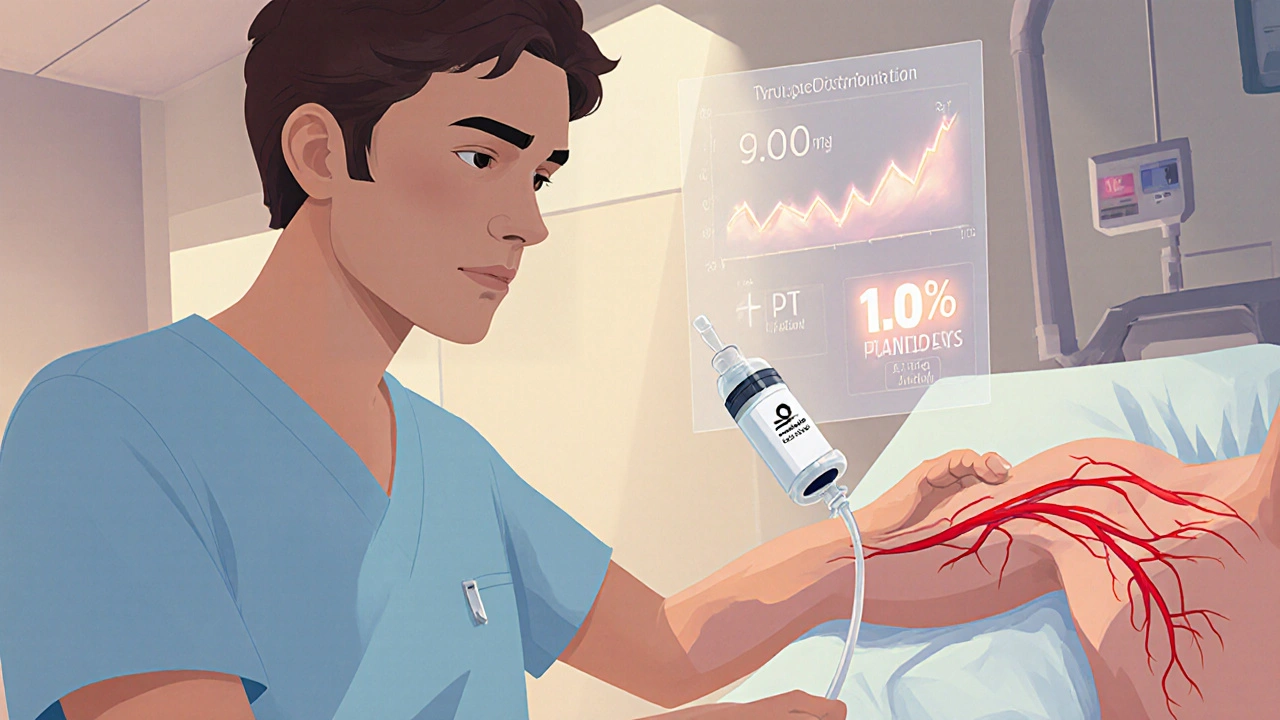Drug-Induced DIC: Causes, Risks, and What You Need to Know
When a medication triggers drug-induced DIC, a life-threatening condition where the body’s clotting system goes haywire, leading to both dangerous clots and uncontrolled bleeding. Also known as disseminated intravascular coagulation, it’s not a disease on its own—it’s a reaction, often sudden and severe, caused by certain drugs. This isn’t a rare side effect you’ll see in fine print. It happens in real hospitals, often when someone is already sick and on multiple medications. Think of it like your blood’s alarm system going off: instead of stopping bleeding where it should, your body starts clotting everywhere, then burns through its clotting supplies—leaving you at risk of bleeding out from a simple cut.
Some drugs are known to flip this switch. Antibiotics like ceftriaxone, a common IV antibiotic used for serious infections, have been linked to cases, especially in kids. Chemotherapy drugs, particularly asparaginase, used in leukemia treatment, are another major trigger. Even heparin, a drug meant to prevent clots, can sometimes cause a rare form called HIT (heparin-induced thrombocytopenia), which can spiral into DIC. And it’s not just about the drug itself—it’s how your body reacts to it. If you’re already fighting infection, cancer, or severe trauma, your system is more vulnerable.
What does this look like in real life? A patient on antibiotics suddenly develops bruising without injury. Their gums bleed when they brush their teeth. Their urine turns dark. Their fingers or toes turn purple. These aren’t just side effects—they’re warning signs. Doctors check for low platelets, rising D-dimer levels, and falling fibrinogen. It’s not something you can ignore. If caught early, stopping the drug and giving plasma or clotting factors can turn things around. Delayed? The risk of organ failure or death rises fast.
The posts here don’t just talk about drug reactions in general—they dig into the real-world cases, the tricky overlaps, and the medications that carry hidden risks. You’ll find breakdowns of how antihistamines can pile on sedation, how misdiagnosing a drug allergy can lead to worse outcomes, and how even common meds like anticoagulants or antibiotics can have cascading effects. This isn’t theory. It’s what happens when a single pill interacts with a body already under stress. If you or someone you care about is on multiple drugs, especially in a hospital setting, understanding drug-induced DIC could mean spotting danger before it’s too late.

